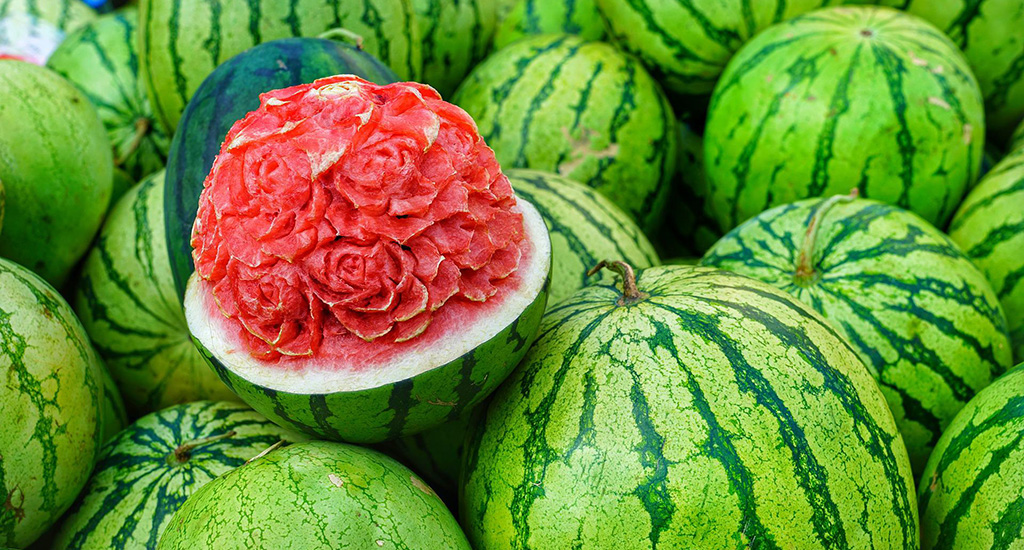
Watermelons bring sweet success to women farmers
In remote villages lacking livelihood opportunities, never mind adequate transportation for taking produce to market, women successfully take up watermelon farming.

In remote villages lacking livelihood opportunities, never mind adequate transportation for taking produce to market, women successfully take up watermelon farming.
Biting into a juicy watermelon wedge is sure to be a sweet relief against the summer heat. But have you ever stopped to wonder where the fruit might be coming from?
One place is Bangudipada, a remote village in the Koraput district of Odisha, where watermelons are offering women a new livelihood lifeline.
Surrounded by hills and dense forest, the village does not have any mobile or internet connectivity. In fact some villagers travel 5 kilometres just to be able to use their phone.
It is a remote village with few livelihood opportunities. But India’s demand for watermelon is changing that.
Sona Monikrishna takes pride in growing the fruit that brings her a sustainable income.
“In this secluded area, there are not many livelihood options. My husband works as a labourer in a field and the income is very limited,” said Monikrishna. “In such a scenario, growing watermelon is really helping us earn.”

For farmers like Monikrishna watermelon cultivation is a financial boon.
But it was a nudge from the government and a non-governmental organisation that got her to grow the vines.
Professional Assistance for Development Action (PRADAN), an NGO working for rural livelihood, initiated watermelon farming for women in eight villages in the Koraput district in January 2020.
The villagers used to grow only chili and beans.
“But the land remained fallow most part of the year,” said Rashmita Shetty, an executive with PRADAN.
“We felt that the farmers could take up watermelon cultivation as water can drain easily in this sloping land. Because stagnant water can destroy the watermelon crop.”
Initially the watermelon cultivation programme was started in 25 acres of land in eight villages, involving 26 women farmers.

The first year PRADAN arranged for the seeds. The next year the Integral Development Tribal Association (IDTA) of the state government gave the women the seeds.
They produced a good yield of melons.
“The average production is around 5-6 tonnes per acre,” said Shetty.
Monikrishna planted watermelon seeds in half an acre of land in January this year from which she harvested 3 tonnes of the fruit in April.
“I had spent around Rs 3,000 in seeds and fertilisers. I sold the fruits for Rs 12,000 in a nearby market,” she told Village Square.
More women farmers have taken up watermelon cultivation because of the good yield and the profit.
Now over 5 lakh farmers in the state grow melons. Around 4 lakh of them are women farmers, according to government officials. (ALSO READ: Watermelons stem distress migration in Odisha’s hunger belt)

“Around 90% of the watermelon farmers in Odisha are women because they work through self-help groups,” said Manoj Kumar Patra, deputy CEO of Odisha Rural Development and Marketing Society (ORMAS), which offers sustainable livelihood programmes for rural producers.
The state government has been taking active steps to create a new market for watermelons and increase the income of farmers.
In 2020-21 Odisha produced 253,448 tonnes of watermelons across 12,510 hectares, according to officials at the state’s Directorate of Horticulture.
“We are already supplying the watermelons to our neighbouring states – Jharkhand, Bihar and Chhattisgarh,” Patra told Village Square.
Last year the watermelons were also sold to a client in Dubai.

“The fruits were bought at Rs 11-12 per kg from the farmers and sold for Rs 14 per kg to the client,” said Patra. “We shipped around 40 tonnes to Dubai in an air-conditioned container.”
But it did not work well. The client incurred a loss as the consignment was first sent to Mumbai and from there it was shipped to Dubai. It took days to reach and a part of the consignment was spoiled.
“We don’t have direct air connectivity from Odisha to Dubai,” said Patra. “Moreover we need big cargo flights to send melons in bulk quantity in a shorter time to other countries.”
Despite the good yield, the women farmers in Koraput are disappointed about the harvest this year.
The fruits are not bright red – indicating a sweet taste and much sought after by the customers, they said.
“Unlike the last two years, the fruits are not red when you cut. They are white and partly red. People don’t buy such watermelons. They consider such fruits as unripe and not sweet,” Rama Krisani, a woman farmer of the Poibeda village, told Village Square.
And believe the reason is because they delayed their sowing this year as they were waiting for the free seeds, according to Shetty.
“They sowed in February instead of January and harvested in April. The fruits didn’t complete the full growth cycle, leading to the loss of colour and taste,” she said.

The women said they knew how long it took for the melons to mature. But they harvested in April, considering that it’s a summer crop. They felt that they would lose their market if they delayed harvesting.
Lack of transportation facilities to take the produce to the market and middlemen taking away a chunk of the profit are problems that need attention too.
Roaming livestock presents another problem.
“Cattle have eaten ripe crops in about one acre of my land this year. The lack of fences makes it easy for the cattle to enter,” rued Dalima Badnayak, a woman farmer in the Bangudipada village.
If these small problems are sorted the women farmers will be able to relish their sweet success even more.
The lead image at the top of this page shows watermelons for sale (Photo courtesy Pixapay)
Gurvinder Singh is a journalist based in Kolkata.